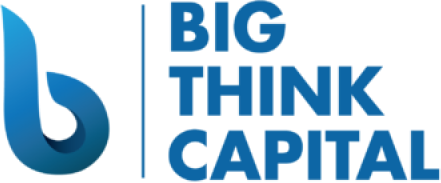Demystifying Working Capital Advances and the Recent Fed Interest Rate Decision
Estimated reading time: 5 minutes
- Understanding Working Capital Advances: Learn how WCAs provide flexible funding for businesses.
- Federal Reserve Impact: Explore how interest rate changes influence small business financing.
- Practical Insights: Discover strategies for leveraging financing options effectively.
- Understanding Working Capital Advances
- The Federal Reserve and Interest Rates
- The Impact of Fed Decisions on Working Capital Advances
- Practical Insights for Small Business Owners
- Connecting with Big Think Capital
- Conclusion
- FAQ
Understanding Working Capital Advances
A working capital advance is a type of funding arrangement where a business receives a lump sum payment in exchange for a portion of its future sales. This type of financing is particularly attractive for businesses facing cash flow gaps. Unlike traditional loans, working capital advances typically do not require extensive credit history checks or collateral, making them accessible to a broader range of small businesses.
How WCAs Work
- Application Process: The application is usually straightforward, with minimal documentation required.
- Flexible Repayment: Repayment is based on a percentage of daily credit card sales, meaning payments fluctuate according to sales volume, easing the burden during lean times.
- Quick Funding: Businesses can often receive funds within a few days, making this an excellent option for urgent needs.
The Federal Reserve and Interest Rates
The Federal Reserve influences economic activity by adjusting interest rates. In a bid to combat inflation or stimulate the economy, the Fed may raise or lower these rates. For small business owners, understanding how these interest rate changes impact funding options is key to making informed financial decisions.
In recent months, the Federal Reserve has signaled a shift in its monetary policy, which has important implications for small business financing.
Recent Fed Rate Decisions
As of early 2025, the Federal Reserve’s interest rate policy continues to adapt to economic conditions. After a period of aggressive rate hikes in response to inflationary pressures, the Fed has indicated a more cautious approach, maintaining rates at a steady level to assess economic stability.
- Interest Rate Holds: The Fed has paused interest rate increases, providing a more favorable borrowing environment.
- Inflation Trends: As inflation rates begin to stabilize, small businesses may find financing options becoming more accessible and affordable.
- Market Adjustments: Lending rates across various financing products may adjust, affecting repayment costs for business owners.
The Impact of Fed Decisions on Working Capital Advances
Given the nature of working capital advances, the relationship between federal interest rate changes and the cost of these products can be somewhat indirect. Here’s how the current interest rate environment affects your financing options:
Borrowing Costs
While WCAs do not typically have a fixed interest rate like traditional loans, they are influenced by the broader lending environment. When Fed rates are stable or decreasing, lenders may offer more competitive rates and terms on working capital advances, benefiting borrowers.
Availability of Capital
A stable interest rate environment encourages lenders to take on more risk, potentially increasing the availability of working capital advances. Lenders may become more willing to offer funding to businesses that may have been seen as too risky in a higher-rate environment.
Economic Confidence
When the Fed signals a stable or reducing rate, it often instills confidence in the economy, leading to increased consumer spending. For businesses, this can translate to better sales numbers, improving the feasibility of taking a working capital advance.
Practical Insights for Small Business Owners
Understanding the relationship between Federal Reserve rate changes and working capital advances provides small business owners with the knowledge to navigate their financing options effectively. Here are three practical takeaways:
- Monitor Fed Announcements: Keeping an eye on Federal Reserve announcements can help you anticipate shifts in lending conditions. Understanding rate changes allows you to time your application for funding to secure the best terms.
- Evaluate Your Financial Needs: Assess your cash flow needs and consider how a working capital advance aligns with these requirements. Determine the repayment structure that works best for your sales cycle to ensure you can meet your obligations.
- Consult with Experts: Leverage the expertise of funding professionals like those at Big Think Capital. Our team can help you evaluate your options and make well-informed decisions that cater to your unique financial situation.
Connecting with Big Think Capital
At Big Think Capital, we understand the nuances of small business financing and the impact of external factors such as federal interest rate decisions. Our goal is to empower business owners by providing access to a range of financing solutions, including working capital advances, SBA loans, equipment financing, and more.
If you are considering a working capital advance to support your business growth, let us help you navigate the process. Our dedicated team can guide you through the application process, ensuring you find the most suitable financing solution for your needs.
Conclusion
In a rapidly changing economic environment, understanding how federal interest rate decisions impact your financing options is essential for small business owners. By grasping the implications of these shifts and leveraging available funding solutions, you can position your business for success.
Explore how a working capital advance can help you manage cash flow and seize growth opportunities. Visit us at bigthinkcapital.com to learn more about our services or speak with a funding expert today. Your business success is our priority, and we are here to assist you every step of the way.
FAQ
What is a working capital advance?
A working capital advance is a funding arrangement where a business receives a lump sum in exchange for a portion of its future sales. It helps businesses manage cash flow gaps.
How do interest rates affect WCAs?
Interest rates can influence the costs and availability of working capital advances. Generally, lower rates create a more favorable borrowing environment.
Are WCAs hard to obtain?
WCAs are often more accessible than traditional loans, as they typically require less documentation and are based on sales performance.






